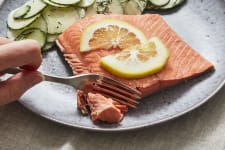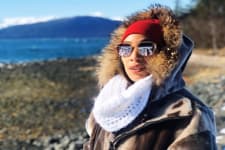When does summer start? It depends on where you are, and who you ask. For some, summer starts when school ends. For others, summer is marked by meteorological cycles, by warmer temperatures. In Alaska, summer is heralded in by the salmon, who started running in May.
But for everyone on this side of the equator, we share an astronomical summer today: the summer solstice, the longest, brightest day of the year. So, to give this long day its due with a glorious Alaskan glow — the days are really long here in the land of the Midnight Sun! — I’m happy to present you with the latest dispatch from Kallenberg family friend and commercial fisherman Melanie Brown. As I share this with you, Melanie and her family are working day and night on the water in Bristol Bay, harvesting sockeye for the season.
***
Maximum Tilt Toward the Sun
By Melanie Brown
The coastline of Bristol Bay is low-lying and far from the mountains. When the days are their longest, close to the time of the Summer Solstice in the North, there is not much to get in the way of the sun as it lowers in this big wide open sky. I have fond memories of witnessing the sun and moon shining close to the horizon with a dark sky above as we fished a night tide. The golden hour that happens around sunset can be quite late when solstice time is near, and it is the perfect light to capture crew shots — even when this hour falls close to midnight.
Wild salmon of all species have run peaks that occur at different times around Alaska and this is for all kinds of reasons: seasonal conditions that drive air and water temperatures, coastal migratory routes, etc. These are the signals that call wild salmon home to spawn. Scientists say that smell is a part of how wild salmon find their way home. This is in keeping with what I learned from my mom, who used to say that the spring melt would drive the taste of the land into the water to let the salmon know they were at their home river.
Salmon start trickling into Bristol Bay around early June and commercial fishing is allowed in most river districts prior to the Summer Solstice, but because of run timing, I never set my site up until after Solstice which falls on the 20th of June this year. I am not quite able to reconcile the irony that at this moment of the year, just as the sockeye salmon run builds to a peak, the days will be losing a little bit of light each day. The loss of light is observable and when the season is underway, we get to see the incremental changes each day that we are on the water. The dark grows longer as the season moves forward. When we fish night tides we have to wait longer for the relief of the sunrise and return of the light. It is a beautiful thing to fall into the rhythm of witnessing these nature-driven changes.

Caption: Golden hour “ussie,” close to midnight.
The farther North you may find yourself on the globe, the more extreme the daylight swing is between the amount of daylight and nighttime and when there is work to be done it is hard to stop if the light does not signal a rest time. For Alaskans who recognize this swing of the light to dark, as Summer Solstice approaches Winter, we feel the need to make the most of the summer light and tend to drive ourselves harder to accomplish work that cannot be done in the dark and cold of winter. We buzz around like bees, seemingly driven and fueled by the light of the long days. There is a certain mania that infuses these bursts of energy. Because of this, although I keenly acknowledge Solstice times, it is hard to pause and consciously receive the beauty of the longest day in the North because of how the long light drives our work.
Solstice in Alaska, Summer or Winter, is a time to expand one's view of the world well beyond oneself by looking outward to the Universe that holds the sun, our star that dictates the seasons and governs the movement of the environment. Witnessing how these natural laws play out through the movement of wild salmon from the view of my skiff each fishing season is a miraculous privilege.
–
Happy summer solstice, and Live Wild,
Monica
Pictured above: A shot from Melanie’s phone, capturing a near-solstice midnight on the water in Kvichak Bay.






